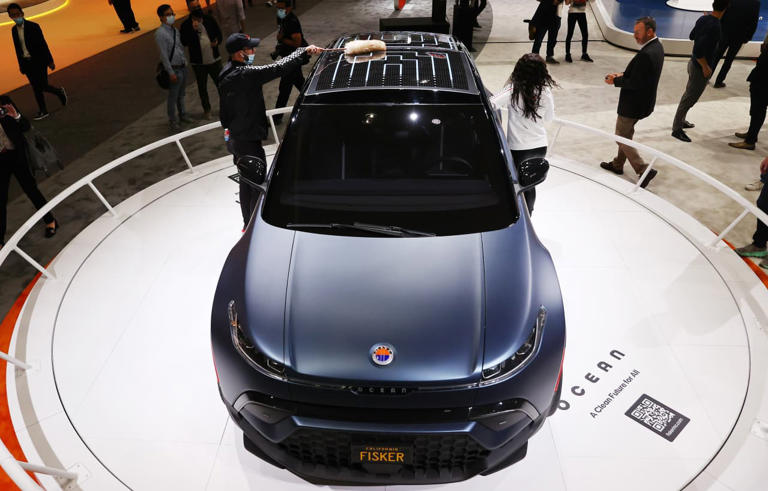For years, the Apple car hung over the global auto industry like the Sword of Damocles—a looming threat that could disrupt and destroy existing industry players.
Now it’s gone. Apple has ended the program after spending untold billions—likely an amount of money that would have auto executives fired but, strangely, seems inconsequential to Apple, which is expected to generate more than $100 billion in free cash in 2024, and has generated some $436 billion in cumulative free cash flow over its past five fiscal years.
Why Apple killed the car will be debated by investors and analysts for a while. Apple didn’t respond to Barron’s request for comment. It could be related to new opportunities presented by artificial intelligence. It might also be that Apple doesn’t really build things. Manufacturing gets farmed out to partners. That doesn’t work in the car business. Cars are not asset-light.
Asset-light business models refer to companies that don’t need to spend a lot of cash putting up expensive manufacturing plants that require lots of parts and inventory. Some businesses, like software, are naturally asset-light. Other businesses choose to be asset-light. EV start-up Fisker, for instance, has Magna International build its cars. Polestar Automotive EVs are built in China by Geely.
It doesn’t appear to be a recipe for long-term success in the car business. There are regulatory reasons. “Every piece of equipment in a car is regulated, tested, and engineered, and over-engineered,” says Freedom Capital Markets auto analyst Mike Ward.
There are price reasons too. Cars cost roughly 50 times what a smartphone costs and are kept by original owners two to four times as long. “It’s the second biggest item a consumer buys…it’s a completely different business model,” says Ward.
There are also differences between software and hardware, says Wedbush analyst Dan Ives. The value of a car is still, to a great extent, in its hardware—engines, batteries, electric motors, brakes, air conditioning, and even the leather seats. The value of an iPhone is mainly in iOS.
That reality shows up in profit margins. Apple’s operating profit margins are in the range of 30%. Top-notch operating profit margins for a car maker are in the range of 10%.
Theoretically, a car maker can still design good hardware and have someone else build it. The theory just hasn’t worked in practice. Successful car companies have control over design and manufacturing. Fisker and Polestar Automotive shares are down about 99% and 89%, respectively, from record highs. Their combined market value is less than $4 billion. Rivian Automotive and Lucid own their manufacturing. They have had their issues, but their market capitalization still totals almost $20 billion.
“After reviewing Fisker and Polestar, we see the asset-light business model as somewhat of a fallacy given high capital requirementsupstream—launch working capital—and downstream—direct distribution,” Jefferies analyst Philippe Houchois writes.
Geely is funding Polestar, raising questions about who really controls the intellectual property, he adds. What’s more, Fisker has abandoned direct selling and will rely on existing dealerships.
“I didn’t expect [Apple] to get into the car business,” says Ward. He believes the bigger threat was Apple buying an existing player, such as Chrysler. “Could [Apple] buy Rivian…that, to me, is the interesting thing.”
It’s a wild idea. Even after the Apple car is gone, the idea of Apple in the car business never really dies.
